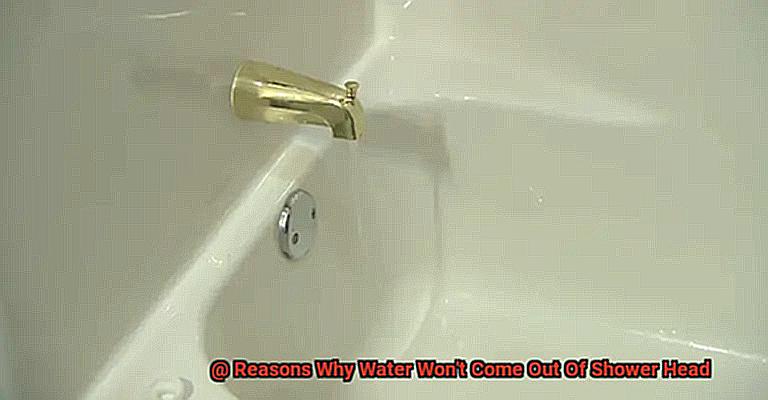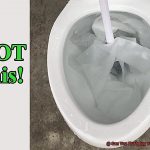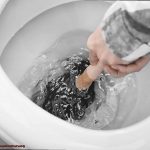Imagine this: you’re exhausted after a hard day’s work and all you want is to step into your shower and let the water wash away your stress. But when you turn on the faucet, there’s no water coming out. Or maybe just a feeble trickle instead of the powerful stream that you’re used to. It can be frustrating, to say the least. But don’t worry, we’ve got your back.
In this blog post, we’ll explore the common reasons why water won’t come out of your shower head. We’ll delve into issues with water pressure, clogs within the shower head, and potential plumbing problems that could be affecting your shower. Plus, we’ll discuss some simple maintenance tips that will keep your shower head in tip-top shape and offer practical solutions to try when faced with a weak or nonexistent shower stream.
Whether you’re a DIY enthusiast or prefer to call in the professionals, this informative blog post will provide you with all the knowledge you need to get the water flowing once again. From easy fixes like cleaning out mineral buildup to more complex plumbing repairs, we’ve got it covered.
So read on and discover why your shower head may be giving you trouble and how you can fix it. With our helpful advice and friendly tone of voice, we’re confident that you’ll soon be enjoying a refreshing and invigorating shower once again.
Contents
- 1 Common Causes of Low Water Pressure in Shower Heads
- 2 Troubleshooting Low Water Pressure in Shower Heads
- 3 How to Remove and Clean a Clogged Shower Head
- 4 How to Diagnose and Fix a Clogged or Damaged Pipe
- 5 What to Do if There is Low Water Pressure Throughout the Home
- 6 How to Check for Proper Installation of New Fixtures
- 7 Conclusion
Common Causes of Low Water Pressure in Shower Heads
Don’t let low water pressure put a damper on your shower experience. If you’re feeling frustrated with a weak stream of water, it’s time to investigate the common causes of low water pressure in shower heads.
Clogged Shower Head
Mineral buildup, dirt, and other debris may be blocking the flow of water. But don’t despair – unclogging a showerhead is a simple fix that doesn’t require any special skills.
Firstly, you’ll need to remove the showerhead from the wall or arm. This can usually be done by twisting it counterclockwise by hand, but if it’s stuck, you may need to use pliers or a wrench. Once you’ve removed the showerhead, it’s time to get soaking.
In a bowl or bucket, mix equal parts water and vinegar and place the showerhead inside. Let it sit for several hours to dissolve any mineral deposits. After soaking, rinse the showerhead thoroughly with water and use a toothbrush or small brush to scrub away any remaining debris.
If you notice any clogs in the small holes of the showerhead, don’t panic. You can use a straightened paperclip or safety pin to poke them out. Once you’ve cleaned the showerhead, reattach it to the wall or arm and turn on the water to test the flow.
If things still aren’t flowing quite right, it may be time to replace your current showerhead entirely. When choosing a new one, think about your needs and preferences. A high-pressure showerhead is best for those who prefer a strong stream of water, while a low-flow showerhead can help conserve water and save money on your utility bills.
All in all, unclogging your showerhead is an easy fix that anyone can handle. With just a little bit of vinegar and elbow grease, you can restore your water pressure to its former glory and enjoy a revitalizing shower experience once again.
Clogged or Damaged Pipe
Don’t let clogged or damaged pipes ruin your shower experience. Mineral deposits, rust, and debris can accumulate in the pipes leading to the showerhead, reducing water flow by causing a traffic jam in your plumbing system. The clog can occur in different parts of the pipes, such as the showerhead itself, the shower arm, or the main water supply line.
Lucky for you, there are easy solutions that you can try before calling in a professional. If the clog is in the showerhead, simply remove it and soak it in a mixture of vinegar and water for several hours to break down any mineral deposits and debris inside. It’s like giving your showerhead a spa day.
If the clog is further down the line, try using a plunger on the shower drain to dislodge any blockages. But if all else fails, don’t hesitate to call in the professionals. They have all sorts of fancy tools, like hydro-jetting equipment, that can blast away even the toughest clogs.
Damaged pipes can also be the culprit of low water pressure or no water at all in your shower. This could be due to a crack or leak caused by age or wear and tear.
Don’t ignore this issue – call in a professional plumber as soon as possible to prevent further damage. Trust us, you really don’t want a burst pipe flooding your bathroom.
Low Water Pressure Throughout the Home
Dealing with low water pressure throughout your home can be a frustrating experience, leaving you feeling like you’re stuck in molasses. But fear not, we’re here to help you understand the root causes of this problem.
One of the most common culprits of low water pressure is a clogged showerhead. It’s like trying to breathe through a blocked nose – the water just can’t flow freely. However, this is an easy fix. All you need to do is remove the showerhead and let it soak in vinegar or a cleaning solution to dissolve any mineral buildup or debris.
Another possible cause of low water pressure is a clogged pipe. Think of it like a traffic jam on the highway – if there’s rust, debris or other materials blocking the way, water can’t flow smoothly. In this case, calling in a professional plumber to clean or replace the affected pipes may be necessary.
Sometimes, low water pressure may be caused by a malfunctioning pressure regulator. This tiny component acts as the conductor of an orchestra – if it’s not doing its job correctly, your water pressure won’t hit those high notes. To check if this may be the issue, simply use a pressure gauge at an outdoor faucet. If the pressure reading is below 40 psi, it may be time to adjust or replace the regulator.
Lastly, low water pressure can be caused by issues with the municipal water supply. It’s like trying to quench your thirst from an empty cup – if there’s an issue with the water main or other infrastructure, everyone in your neighborhood or city may experience low water pressure. In this case, contacting your local water department is the best course of action.
Improper Installation
The culprit may be improper installation. Improper installation is one of the most common reasons why water won’t come out of a showerhead. This can occur if the showerhead is installed incorrectly or with the wrong type of fittings.
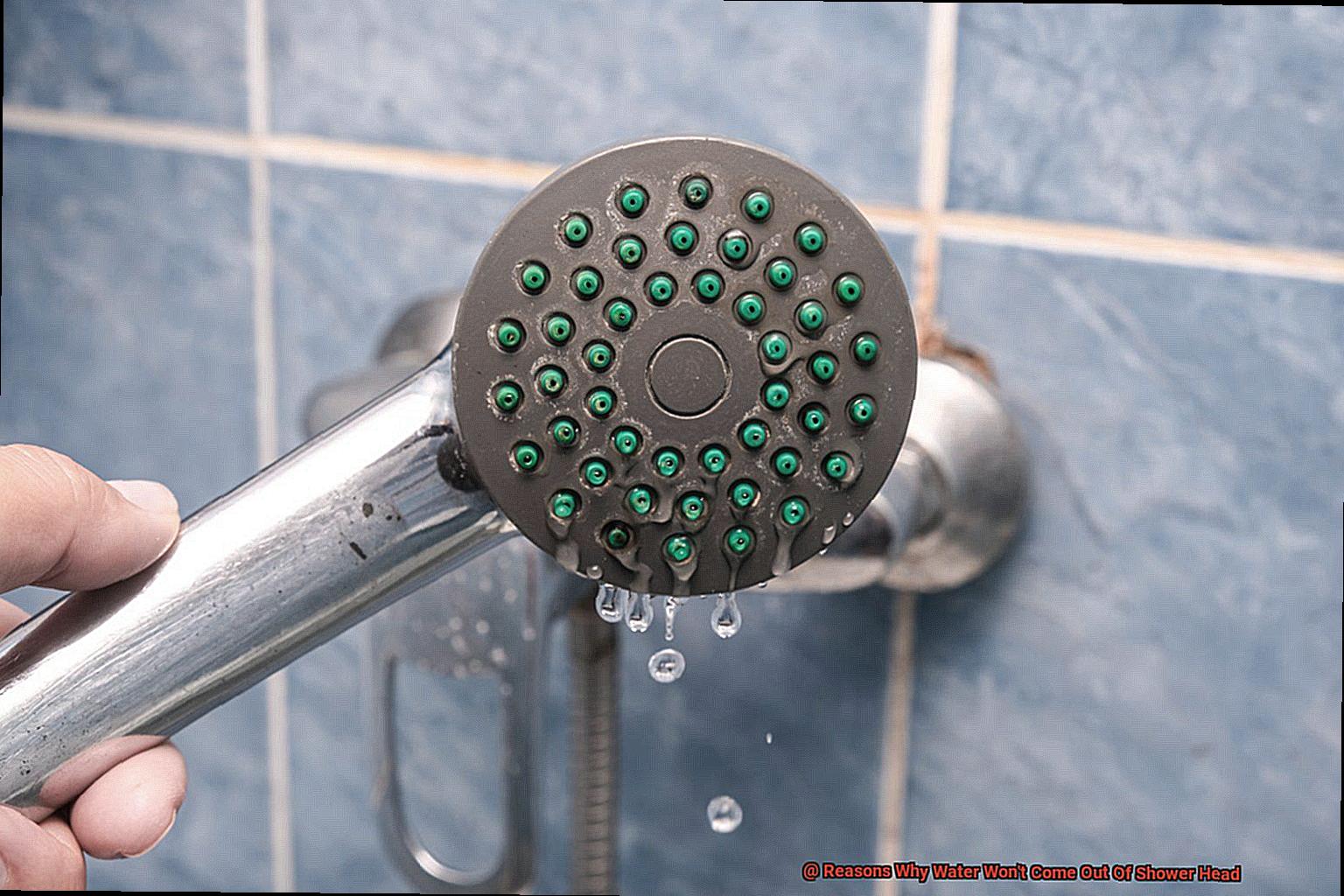
Improper installation is like trying to solve a jigsaw puzzle without all the right pieces; it just won’t work. If your showerhead is not installed correctly, it can cause leaks, low water pressure, or even block the flow of water entirely. What’s worse is that improper installation can be difficult to detect. Even if the showerhead appears to be correctly installed, it may not be seated correctly, or it may have loose fittings that worsen over time.
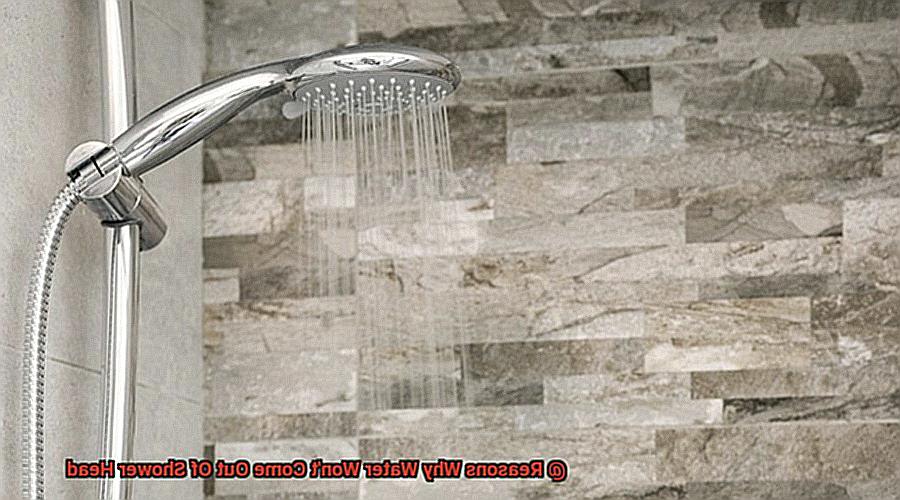
Poor installation can also cause damage to the showerhead itself. If the fittings are too tight or too loose, they can cause cracks or other types of damage that prevent water from flowing correctly. Furthermore, if the showerhead is installed at an incorrect angle or height, it can cause water to spray in unwanted directions or at a lower pressure than desired.
To avoid these problems, make sure you use the proper fittings and follow the manufacturer’s instructions carefully. Think of it as following a recipe; each ingredient needs to be added correctly for a successful outcome.
If you’re unsure about how to install a showerhead properly, it’s always best to consult with a professional plumber or experienced handyman to ensure everything is done correctly.
Troubleshooting Low Water Pressure in Shower Heads
The dreaded low water pressure in shower heads. As an expert troubleshooter, let me tell you – I feel your frustration. But don’t give up hope just yet. There are several possible causes and solutions to this pesky problem.
First up, the notorious clogged shower head. This is a common culprit of low water pressure, as mineral deposits can build up in the small holes of the shower head over time. But fear not, for this is an easy fix.
Remove the shower head and let it soak in a solution of equal parts vinegar and water for a few hours.
This will dissolve the mineral buildup, allowing for better water flow. Then use a small brush or toothpick to gently remove any remaining debris.
Another possible cause is a faulty diverter valve. This little guy controls the flow of water between the tub spout and the shower head. If it’s worn or damaged, it may not be able to fully redirect water to the shower head, resulting in low pressure. Unfortunately, this isn’t an easy DIY fix and may require professional help to replace the diverter valve.
But wait, there’s more. A partially closed shut-off valve could also be to blame for weak water flow in your shower head. This sneaky valve controls the flow of water to your entire bathroom and may have been accidentally closed or partially closed. Double-check that the valve is fully open to ensure proper water flow.
And if all else fails, don’t hesitate to call in the big guns – aka a professional plumber. They can diagnose any leaks or other plumbing problems that may be affecting your water pressure.
How to Remove and Clean a Clogged Shower Head
If so, you may have a clogged showerhead. Mineral deposits and other debris can accumulate in the small openings of your showerhead, reducing water flow and making your shower feel like a trickle. But don’t worry, with just a few tools and household items, you can easily remove and clean your clogged showerhead.
Here are some ways to explain how to remove and clean a clogged showerhead:
Turn off the water supply and loosen the showerhead
Before starting any work, make sure to turn off the water supply to the showerhead by closing the valve located near the shower. Then, use an adjustable wrench or pliers to loosen the showerhead from the arm. Be sure to wrap a plastic bag around the showerhead to prevent any damage to its finish while you work on it.
Soak the showerhead in vinegar or lime juice
Once you have removed the showerhead, soak it in a mixture of vinegar or lime juice and warm water for at least 30 minutes. These acidic substances are excellent natural cleaners that can dissolve mineral buildup and other debris that can cause clogs in your showerhead.
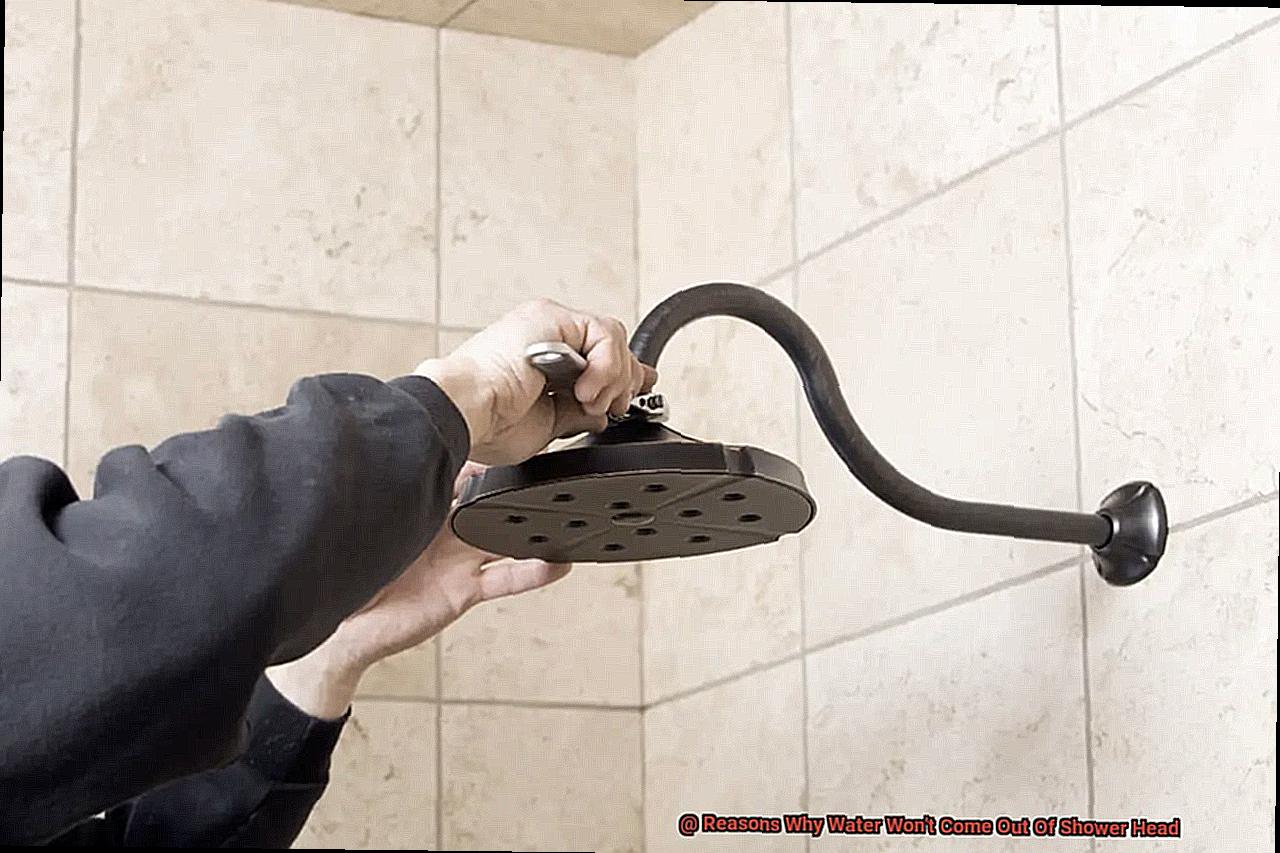
Rinse and reinstall the showerhead
After soaking and scrubbing, rinse the showerhead thoroughly with warm water and reinstall it back onto the arm. Turn on the water supply and test whether the flow has improved. You’ll be amazed at how much of a difference this simple cleaning process can make.
Regular cleaning can prevent future clogs
To prevent future clogs and improve water pressure, consider cleaning your showerhead every three months or more often if you have hard water. Regular cleaning will keep your showerhead functioning at its best and ensure that you always have a refreshing and satisfying shower experience.
Check for other issues causing low water pressure
If your showerhead is still clogged after cleaning it with vinegar or lime juice, you may need to replace it. However, before doing so, check if there are any other issues causing the problem.
For instance, low water pressure could be due to a faulty valve or a leaky pipe behind the wall. In these cases, contacting a professional plumber may be necessary to fix the issue.
How to Diagnose and Fix a Clogged or Damaged Pipe
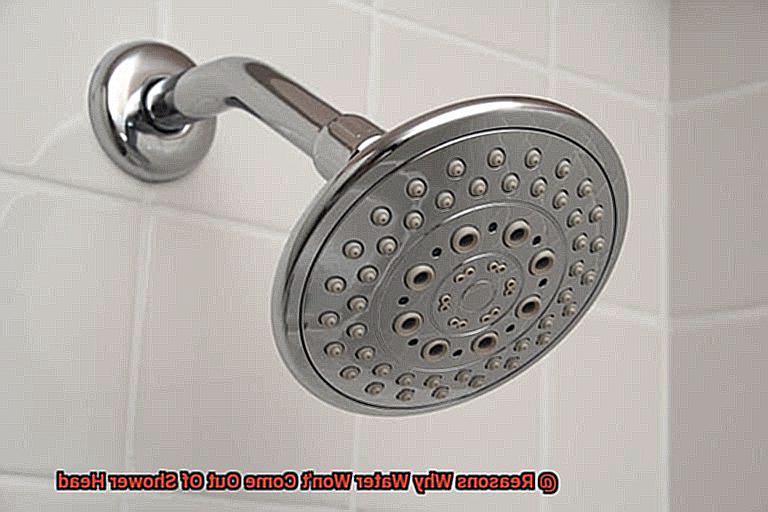
A clogged or damaged pipe can quickly turn your relaxing shower into a frustrating experience. Luckily, diagnosing and fixing the problem doesn’t have to be a daunting task. With these five easy steps, you can have your water flowing smoothly in no time.
- Step 1: Turn off the water supply to the showerhead. This is an essential step to prevent any water from coming out while you work. You don’t want to get soaked or make a mess.
- Step 2: Remove the showerhead from the pipe. Depending on how it’s attached, you may need pliers or a wrench to do this. Don’t worry if it’s stubborn, take your time and be gentle.
- Step 3: Inspect the pipe for any visible signs of damage or leakage. If you see any cracks or leaks, you’ll need to replace that section of the pipe. It’s crucial to catch any damage early before it becomes a bigger problem.
- Step 4: If there is no visible damage, then your pipes may be clogged. Mineral buildup and debris can accumulate over time and cause blockages in the pipes, restricting water flow to the showerhead. You can try using a plunger, a pipe snake, or a vinegar solution to dissolve any buildup in the pipes. A plunger works by forcing water through the pipes and dislodging any blockages. A pipe snake is a flexible tool that can be inserted into the pipe to break up clogs. A vinegar solution can dissolve mineral deposits in your pipes naturally.
- Step 5: Reattach the showerhead and turn on the water supply to test if water is flowing correctly. If not, it may be necessary to call in a professional plumber. Sometimes, complex clogs or damages require specialized tools and expertise.
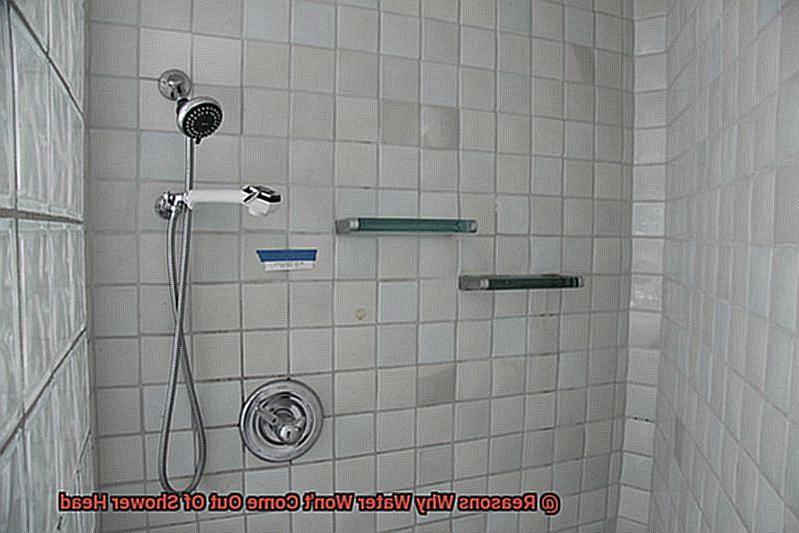
Remember, chemical drain cleaners can be harmful if not used properly. Always read the instructions carefully and use protective gloves and eyewear.
What to Do if There is Low Water Pressure Throughout the Home
Are you tired of low water pressure in your home? It’s time to take action. In this blog post, we will explore the possible causes of low water pressure throughout your home and provide solutions for each issue.
Clogged Faucets and Showerheads
The first possible cause of low water pressure is a clogged faucet or showerhead. Mineral deposits and debris can accumulate in these fixtures over time, reducing water flow. To fix this issue, remove the fixture and soak it in a vinegar and water solution to dissolve any blockages.
Issues with Water Supply
If the low water pressure is not isolated to one fixture, it could be an issue with your home’s water supply. Check with your neighbors to see if they are experiencing the same issue. If they are, contact your local water company to report the problem. However, if it’s just your home, ensure that your shutoff valve is fully open, and your main water supply valve is not partially closed.
Problems with Plumbing System
A buildup of sediment or mineral deposits in your pipes can also cause low water pressure throughout the home. Flushing out the pipes or replacing them altogether may fix this issue. But if there’s a more severe problem such as a clogged or damaged water main, it’s best to contact a professional plumber to assess the situation and make necessary repairs.
Faulty Valves
If the problem lies solely with your showerhead, a faulty diverter valve may be responsible for directing water from the bathtub faucet to the showerhead, which may require replacement. A damaged shutoff valve can also cause low water pressure throughout your home. Ensure all valves are fully open and functioning correctly.
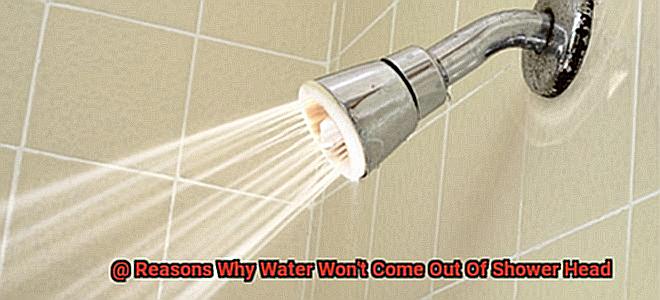
Simple Solutions
In conclusion, low water pressure throughout the home can be caused by multiple factors. If you’ve tried these solutions and the problem persists, don’t hesitate to call a professional plumber. Remember, addressing the issue as soon as possible will prevent further damage and ensure optimal functionality.
How to Check for Proper Installation of New Fixtures
It’s a great way to add a fresh look without breaking the bank. However, ensuring proper installation is crucial to prevent potential problems. Improper installation can cause water to not come out of the showerhead or even cause leaks in your plumbing system. In this article, we’ll take you through five easy steps to check for proper installation of new fixtures.
Check the connections
The first step is to make sure that all the connections are tightly secured. Use pliers or an adjustable wrench to tighten any loose connections. Be careful not to overtighten and cause damage.
Look for leaks
Turn on the water and check for any leaks around the connections. If there are any leaks, tighten the connections further or replace any damaged parts. Ignoring leaks can lead to costly water damage.
Remove debris
Over time, debris or sediment can build up and block the flow of water. Remove the shower head and clean any debris from the filter or screen. Rinse the filter thoroughly before reinstalling the shower head.
Check for airlocks
Sometimes air can become trapped in the pipes, causing a blockage in the flow of water. To remove airlocks, turn on the hot and cold water taps in the sink closest to the shower for a few minutes.
Test Water Pressure
Low water pressure can be a sign of a bigger problem with your plumbing system. Check other fixtures in your bathroom to see if they are also experiencing low water pressure. If so, it may be necessary to call a professional plumber.
By following these simple steps, you can ensure that your new shower head has been installed correctly and is functioning properly. Enjoy your updated bathroom with peace of mind. Don’t hesitate to seek assistance from a professional plumber if you encounter any issues during installation or after testing water pressure.
qnLMwkbU1V0″ >
Conclusion
In conclusion, there are several reasons why water may not be coming out of your shower head.
It could be due to a clogged showerhead, low water pressure, or a faulty valve. By identifying the root cause of the problem, you can take appropriate steps to fix it and enjoy a refreshing shower once again.
If you’re still having trouble, don’t hesitate to call in a professional plumber for assistance.

